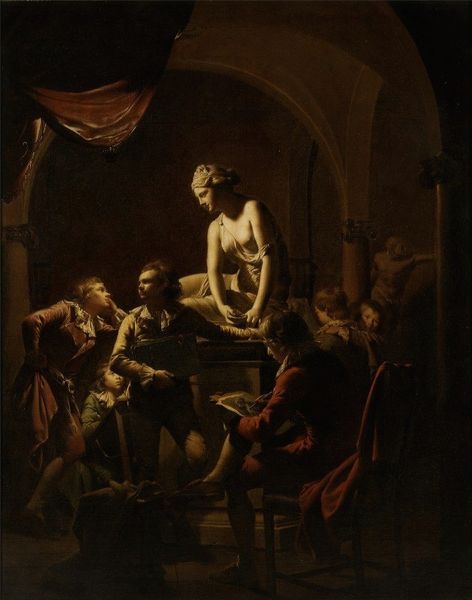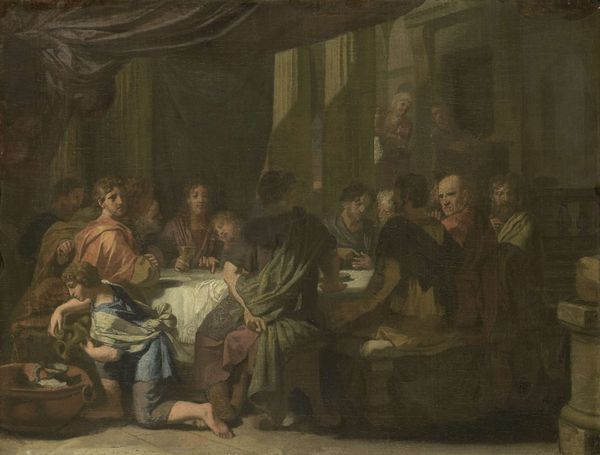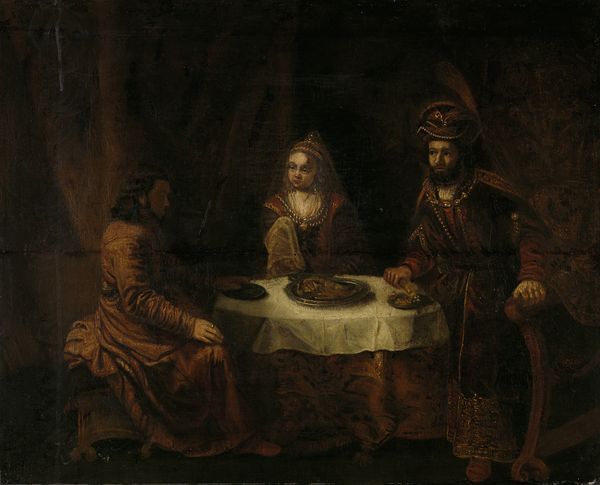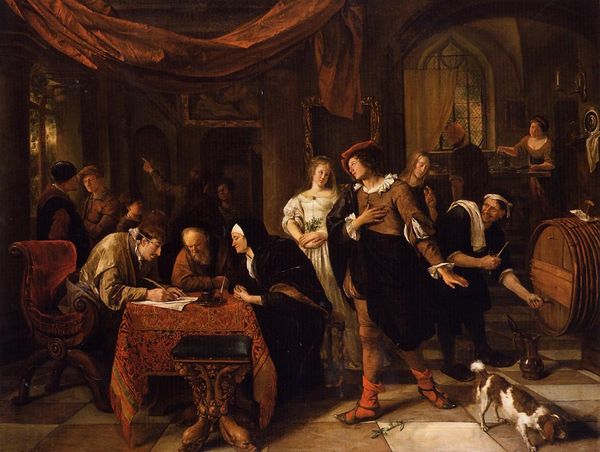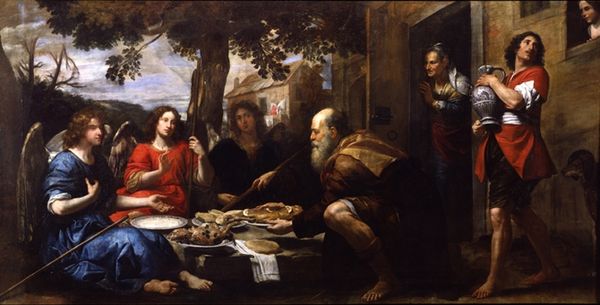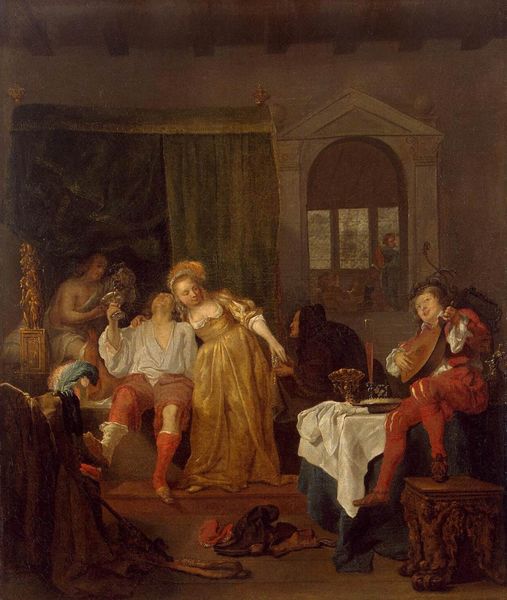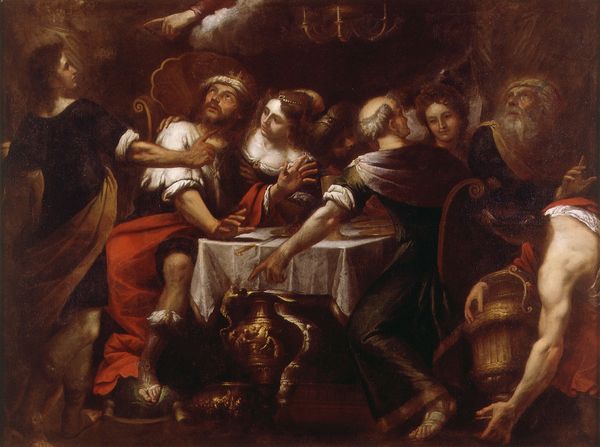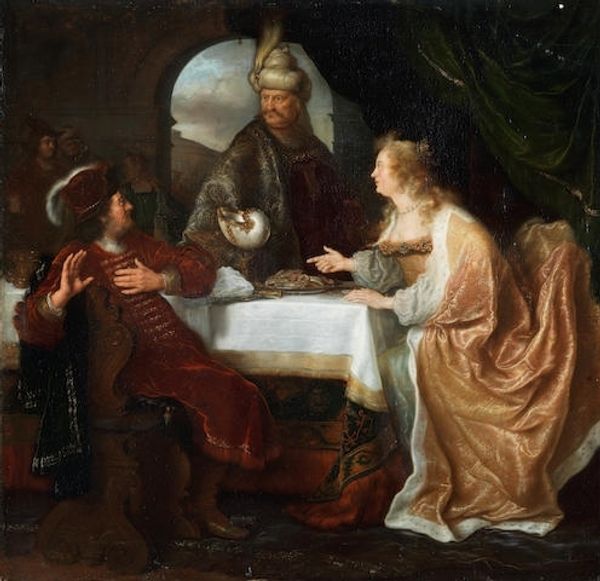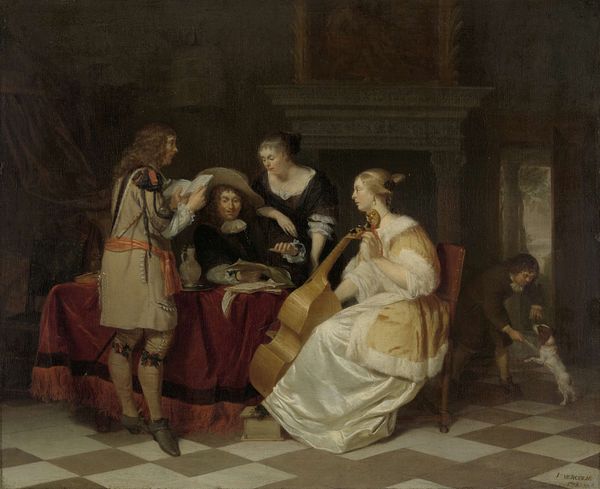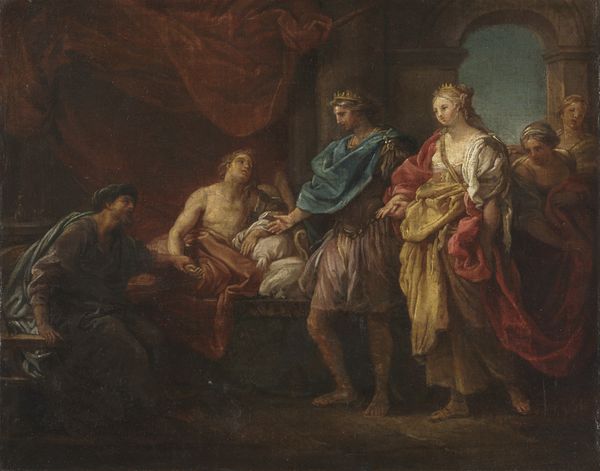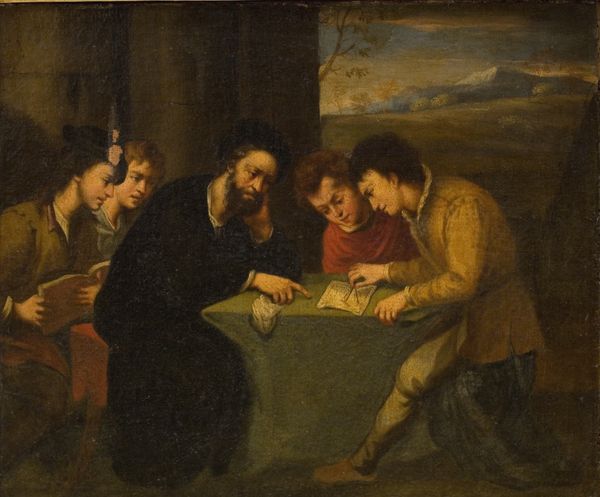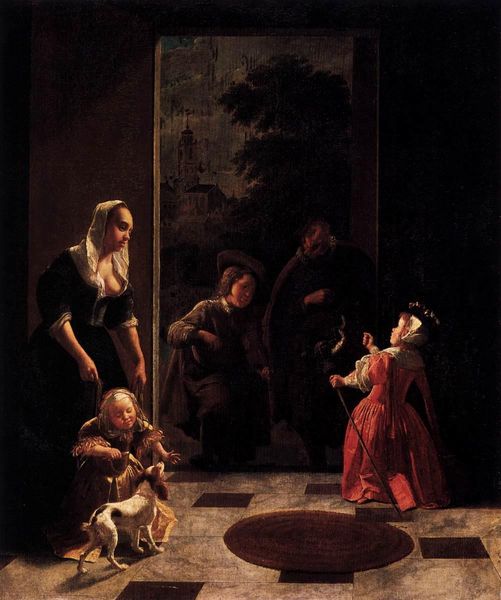
The Prodigal Son Receives His Rightful Inheritance
0:00
0:00
bartolomeestebanmurillo
Museo del Prado, Madrid, Spain
painting, oil-paint
#
baroque
#
painting
#
oil-paint
#
figuration
#
christianity
#
men
#
genre-painting
#
history-painting
#
christ
Dimensions: 27 x 34 cm
Copyright: Public domain
Curator: What strikes me most about Bartolomé Esteban Murillo's "The Prodigal Son Receives His Rightful Inheritance," which belongs to the Prado Museum collection in Madrid, is how muted the palette is, emphasizing the gravity of the moment. Editor: Yes, there’s a somber quality. The illumination is focused, almost theatrical, guiding the viewer’s eye to the pouring of those coins and the figures engaged in that process. You really sense the weight of capital changing hands here. Curator: Absolutely, the scene carries immense cultural weight tied to patriarchal systems, specifically through inherited privilege and the role of men within family structure, think primogeniture! I immediately read into that tension with the young man, probably white, now having the power over financial resources… And who decided this division was just? Editor: Precisely, and let’s think of it in terms of production. Oil paint allowed Murillo to build up those subtle layers of light and shadow to create an almost tangible atmosphere of unease in the dimly lit room, perhaps illustrating that money itself is a social construction. The canvas then became the location of constructing wealth itself through paint. Curator: The darkness definitely serves a symbolic purpose too. The scene itself suggests this crucial point within the biblical narrative—a young man obtaining his inheritance from the father—can easily be analyzed for implications in wealth distribution along axes of generational inheritance. Editor: You're right to mention that. But looking closer, those coins almost seem carelessly piled; there’s very little care or precision involved, suggesting perhaps money’s capacity to corrupt when there is too much surplus in a single point of ownership. Curator: This also brings up issues related to individual versus collective ethics… How can we use our material resources ethically to empower not just the single individual, but broader communal needs? What do these stories tell us about social change or stasis? Editor: On a purely aesthetic level, it really encourages an awareness of the canvas itself—the weave, the layered application of pigments and glazes to bring it to life, as a produced element—but also prompting considerations of economic exchange and ethics beyond solely its creation. Curator: I'll definitely reflect on this through our discussion and look at similar contemporary approaches. Editor: Indeed! I see the painting as far from silent on modern capitalist issues; thanks to its skillful construction, there's much still left to question.
Comments
No comments
Be the first to comment and join the conversation on the ultimate creative platform.
